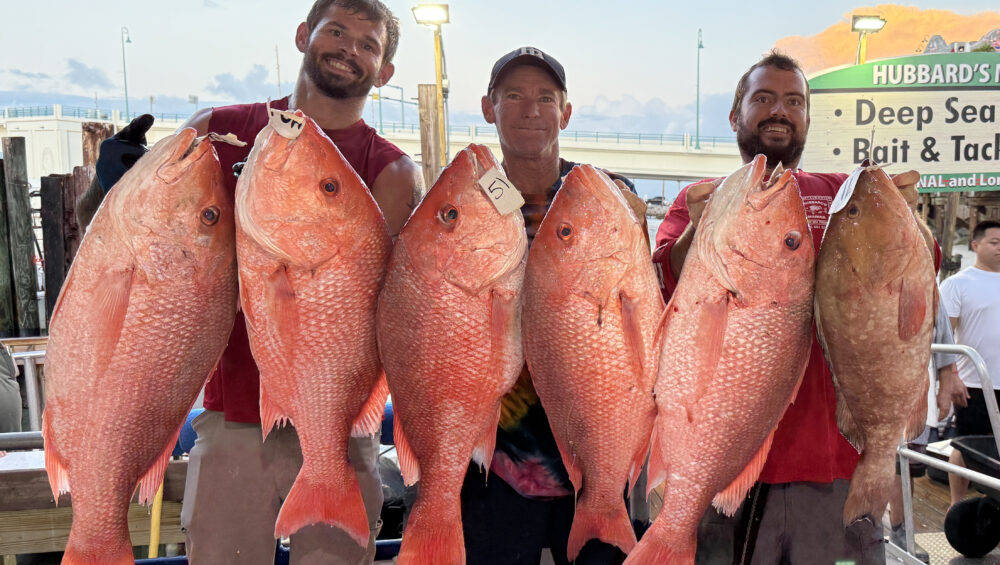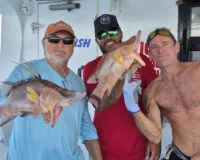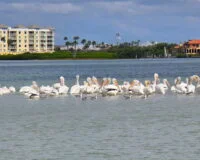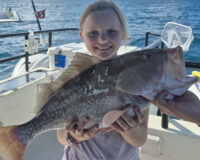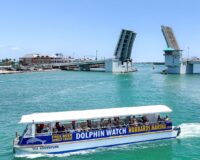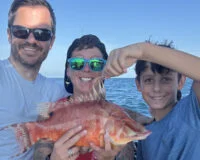Inshore Fishing Report
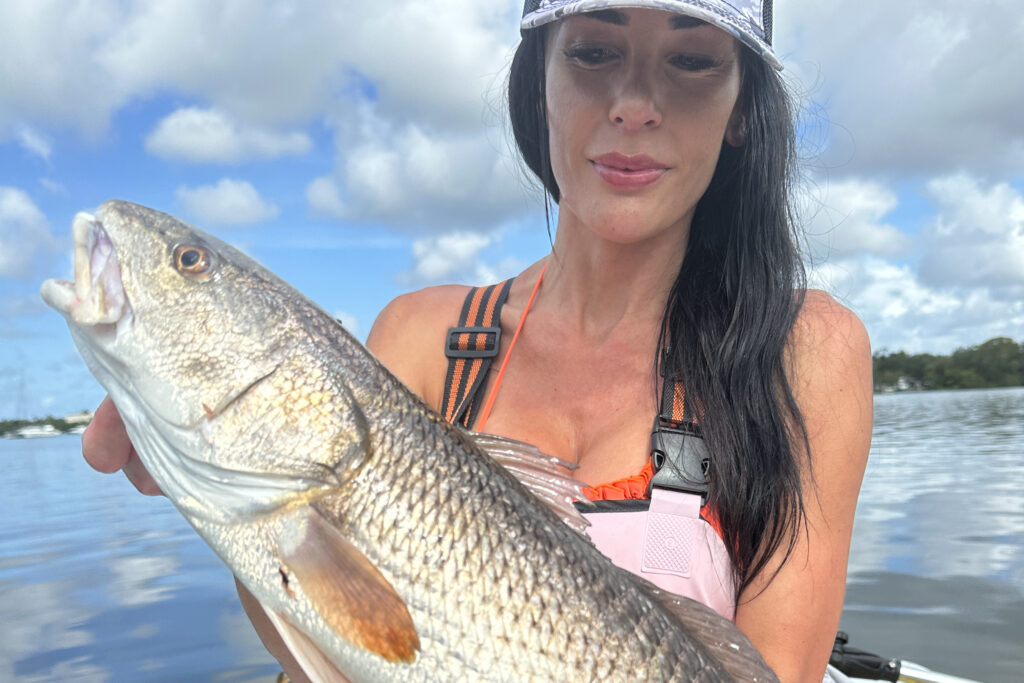
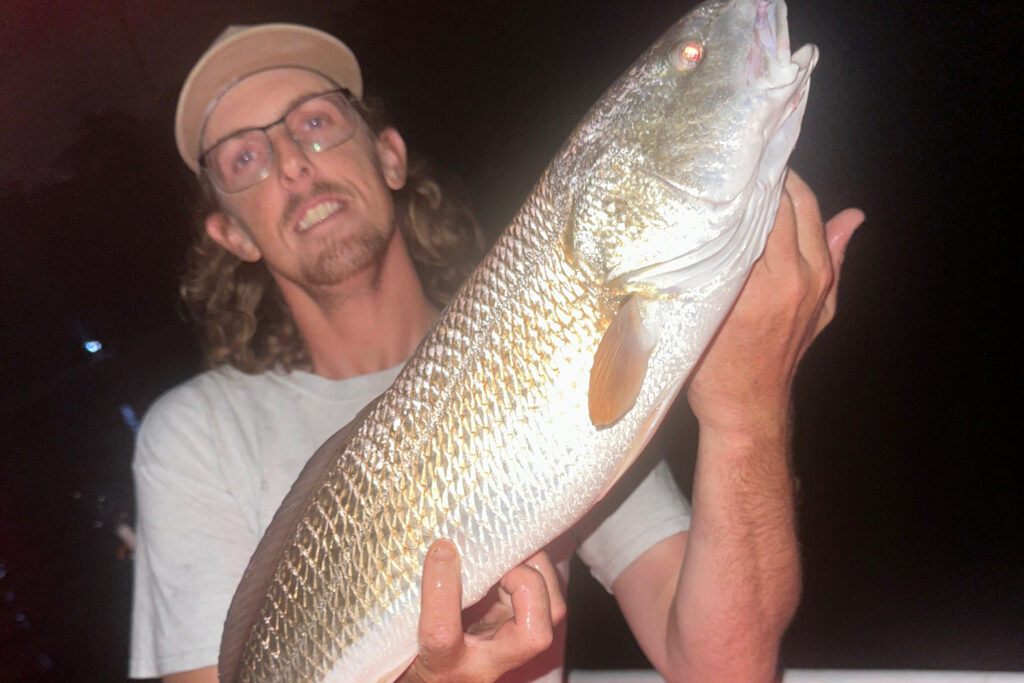
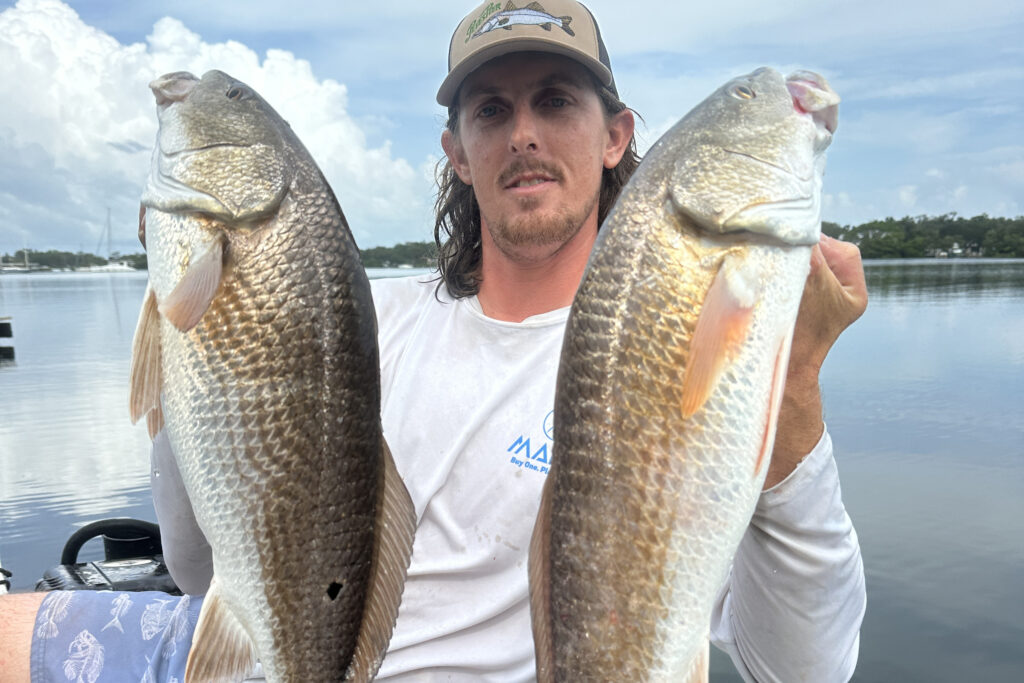
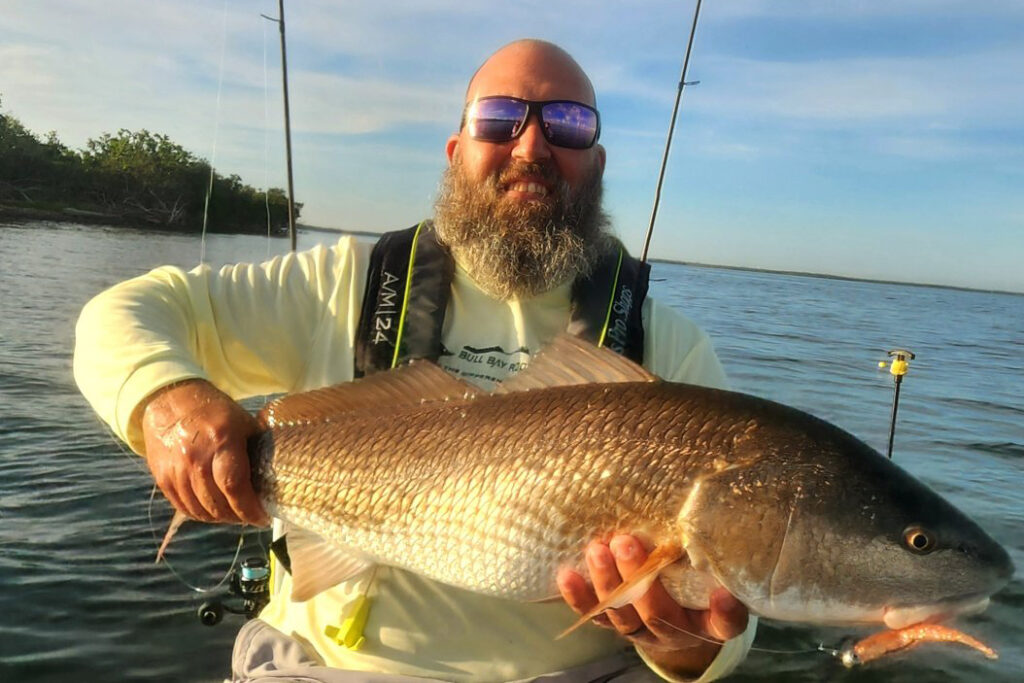
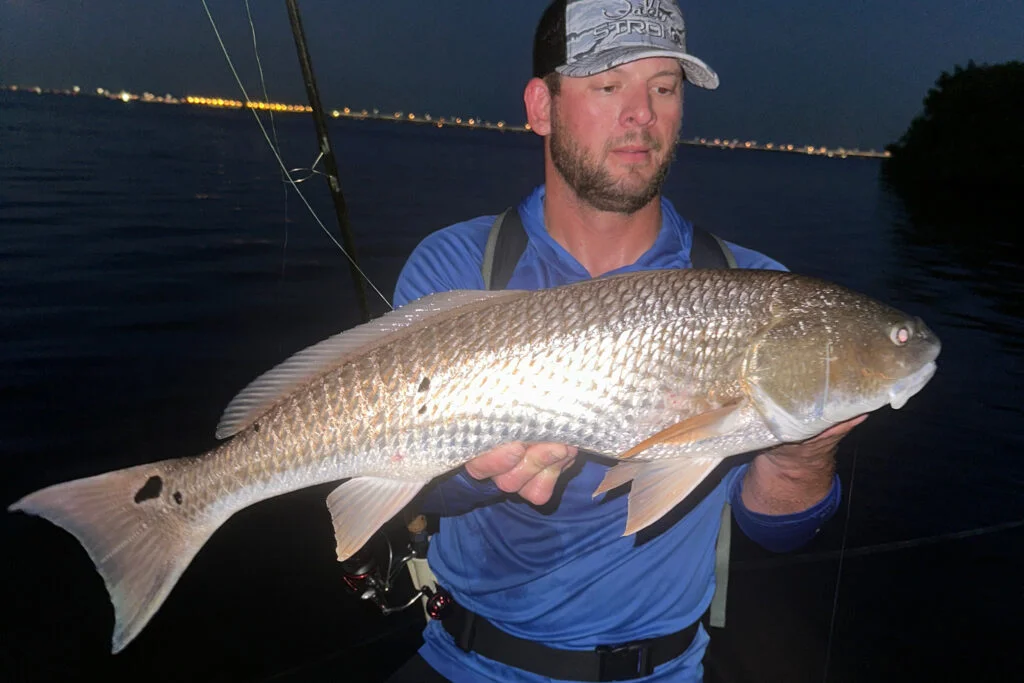

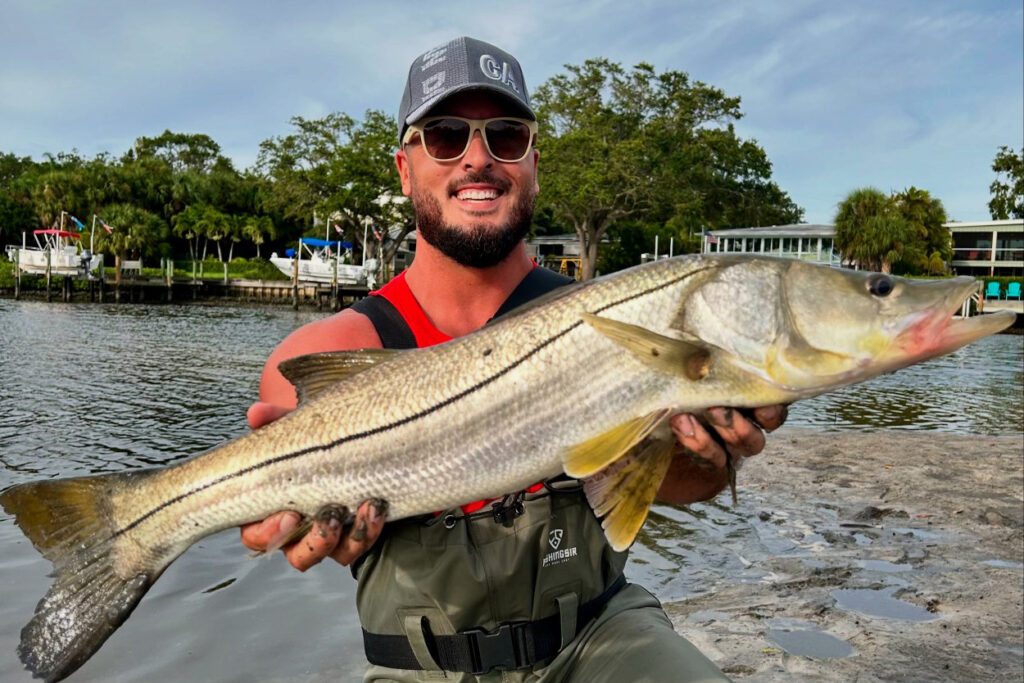
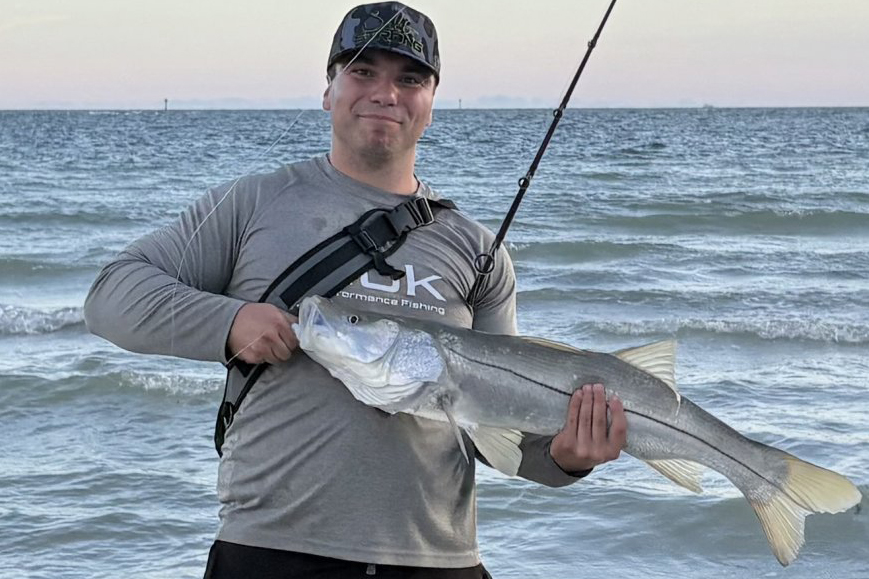
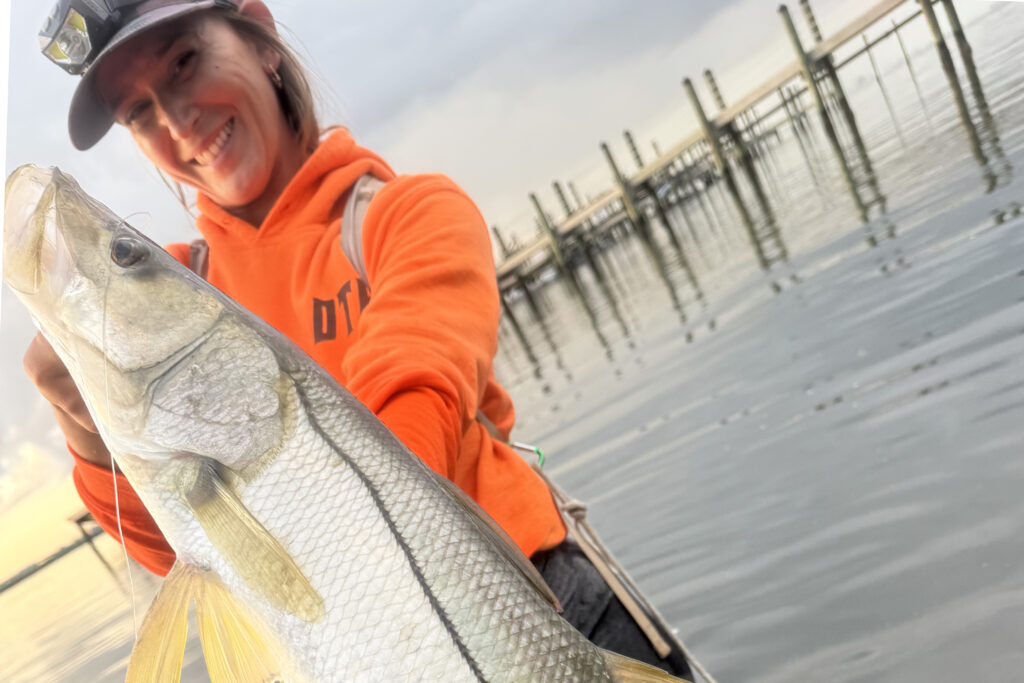
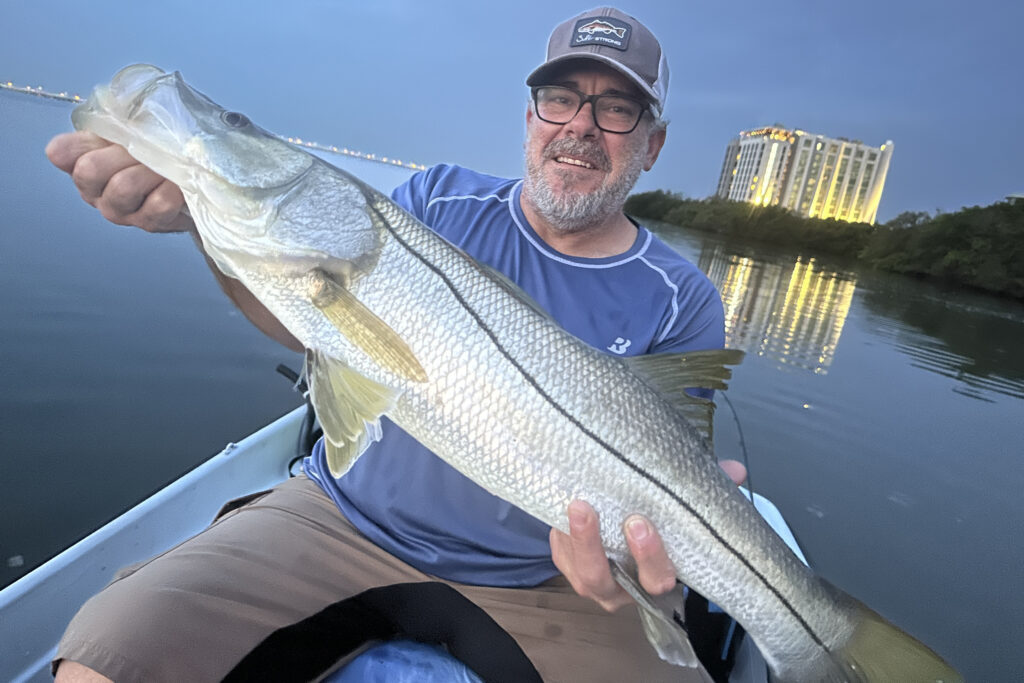
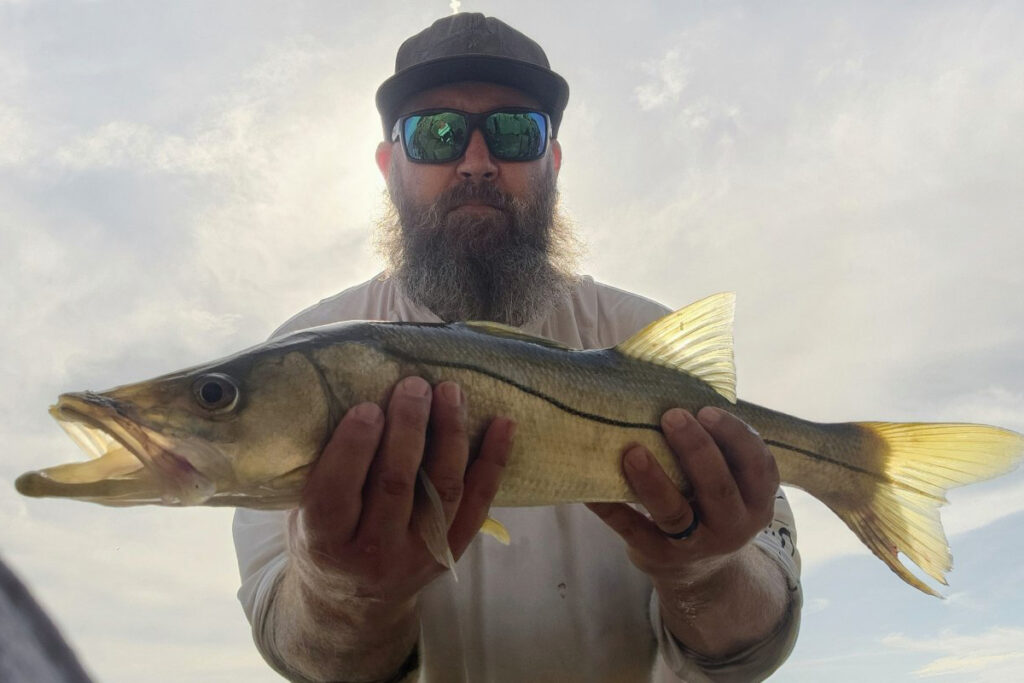
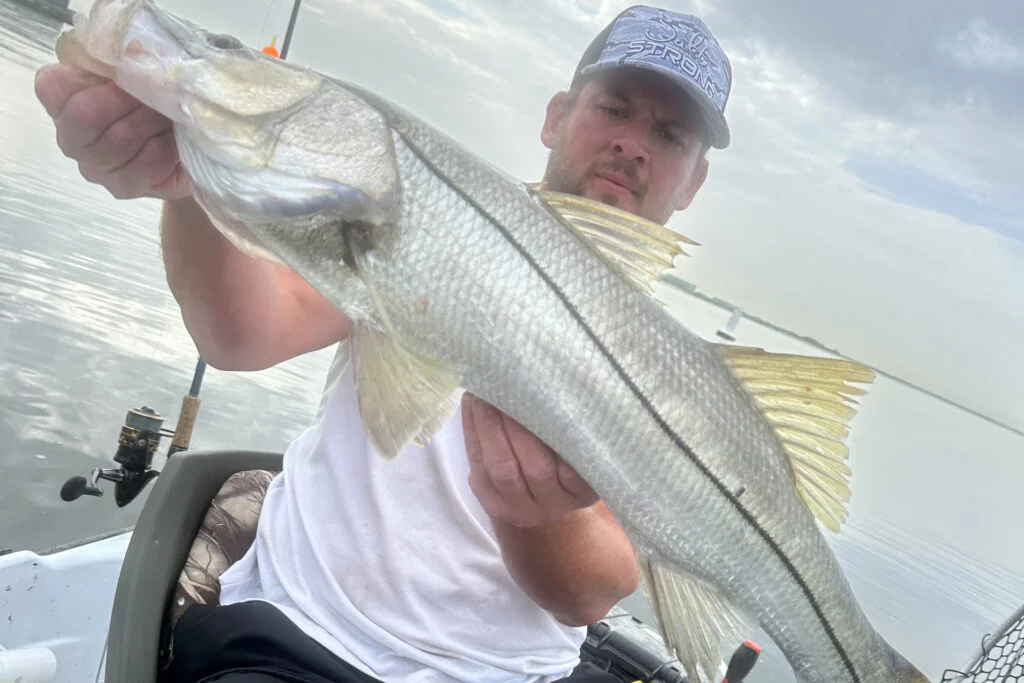
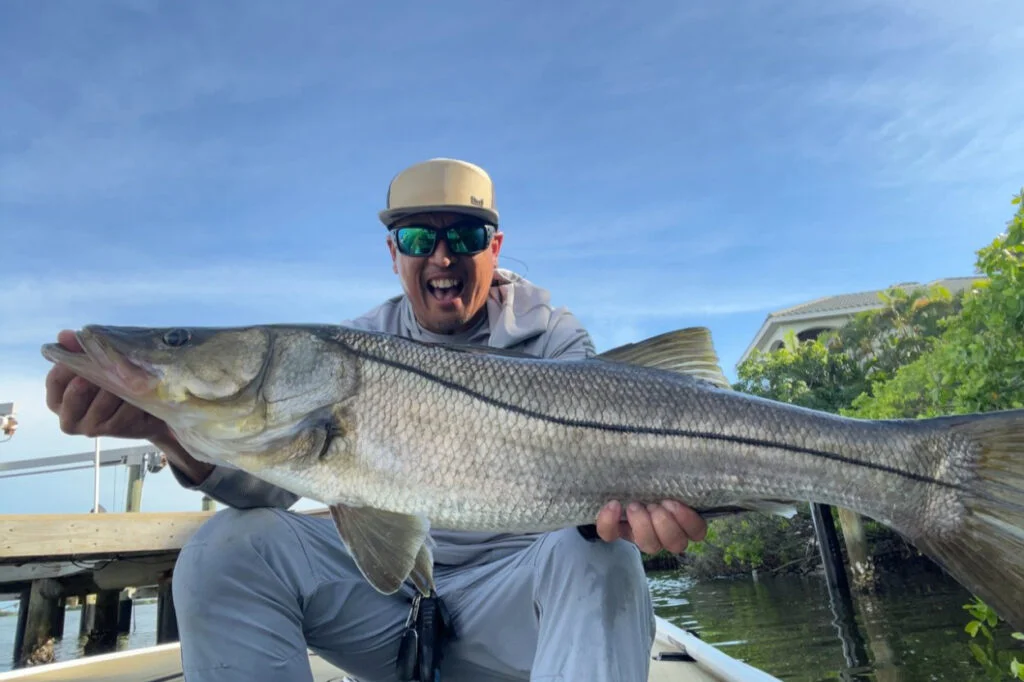
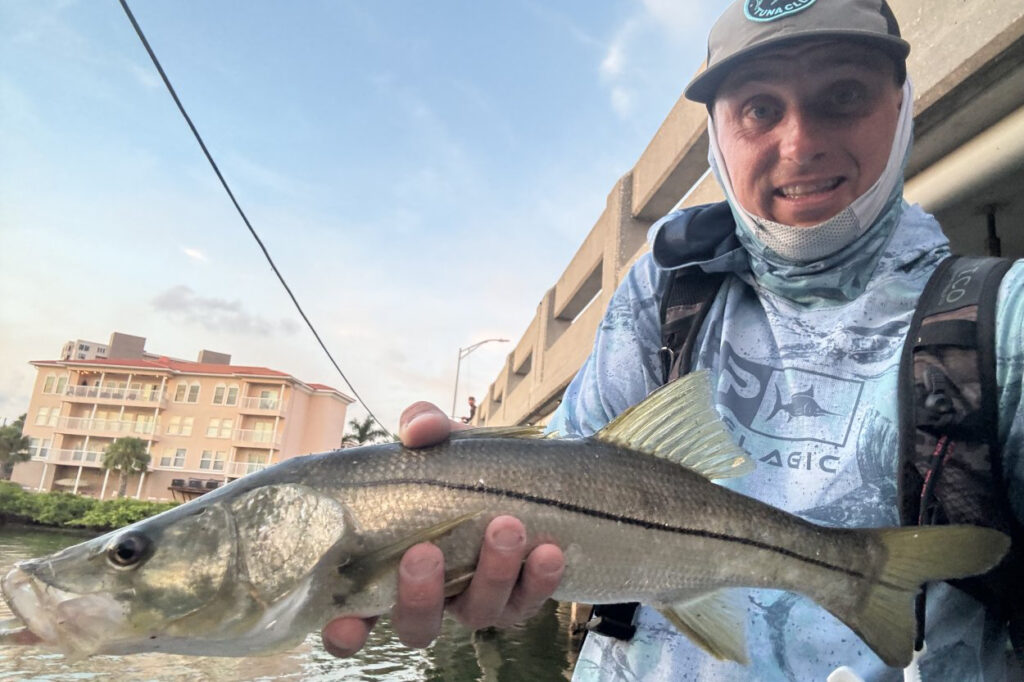

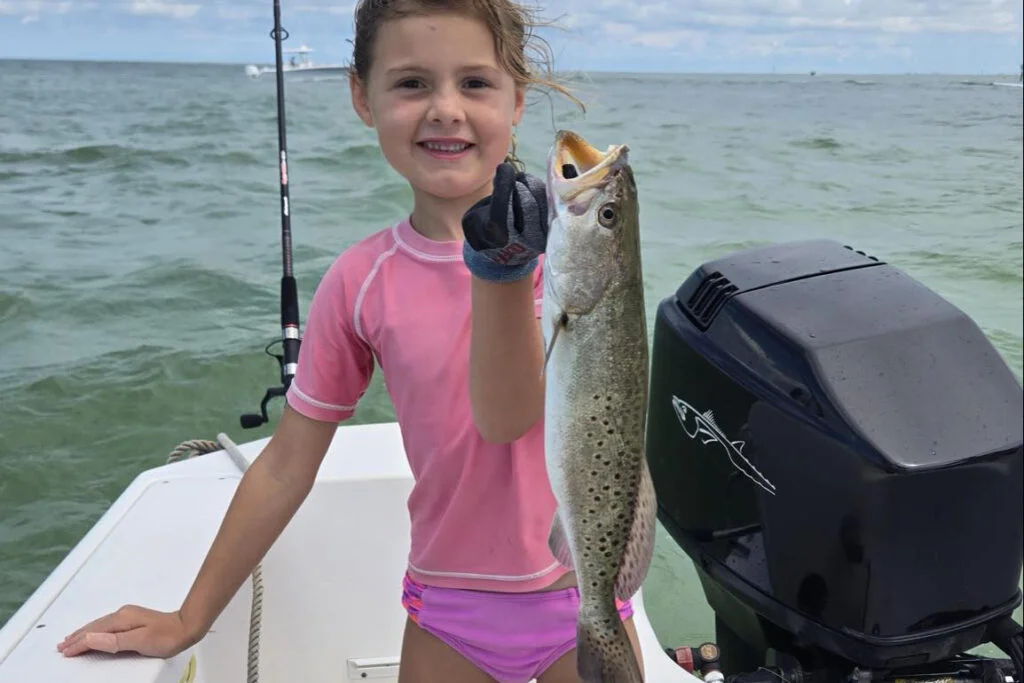
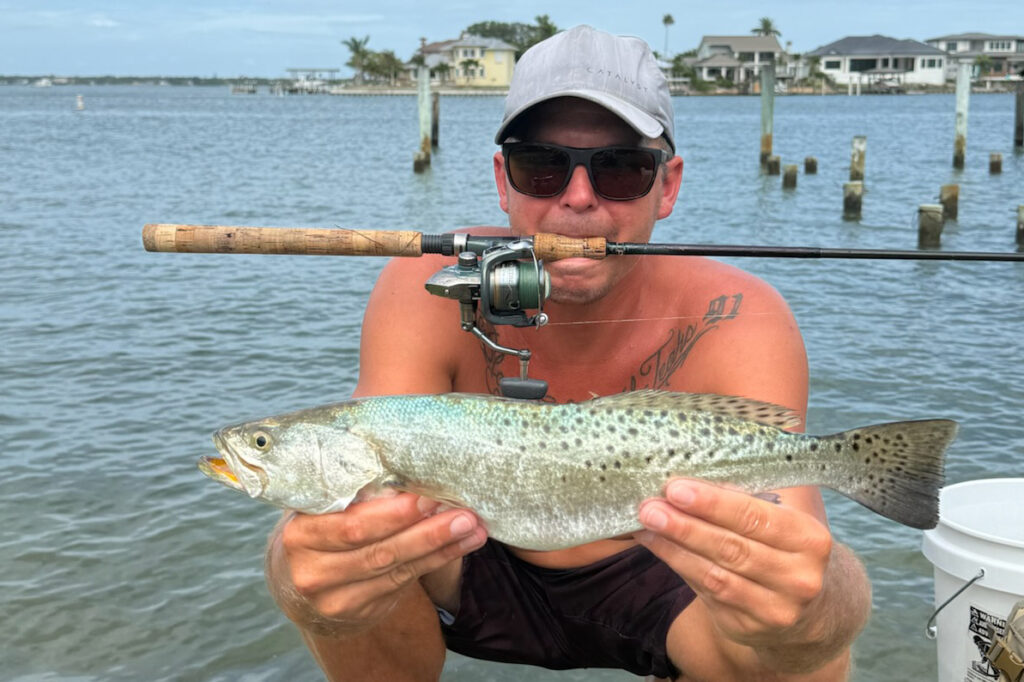

Inshore fishing is still very productive, especially with the consistent water movement helping keep bait and predator fish on the move. Snook are active along the beaches, passes, and bridge points. They’re also still hanging in the bays but favoring outer bay structures where they can ambush prey from shaded cover. Trout action has been solid, especially on deeper flats and edges where cooler water and bait converge. Redfish have been more spread out, but they’re still being caught along mangroves and oyster bars—just follow the mullet schools. Mangrove snapper are fired up around piers, docks, and bridges—small chunks of threadfin or shrimp are ideal. Tarpon are thick in the bay, passes, and along the beaches.
Fishing Tips
- Snook: Use live baits like greenbacks, threadfins, and shrimp, or try flair hawks and soft plastics at night.
- Redfish: Look for them around mangroves, oyster bars, and flats, and use dead baits during higher tides.
- Trout: Target them with soft plastics, white bait, and shrimp around deeper flats and potholes.
- Tarpon: Target them during the full moon with crab flushes, making it an ideal time to target them.
- Flounder: Find them near sandy bottoms and structures, biting on bottom baits.
- Pompano: Be prepared to move frequently to stay on their bite.
- Sharks: Use big dead baits in areas with moving water.
Help spread the word about what to do if you hook or entangle a bird. Never cut the line; instead, reel in the bird carefully to dehook and release it. If you accidentally hook a dock, break the line at the hook to avoid leaving any line in the water. Seabirds with fishing lines hanging from them are becoming more common, and this could lead to the closure of fishing areas.
Rising concerns about bird entanglements might result in closing fishing spots, impacting the few available locations around Tampa Bay from shorelines, docks, bridges, or piers. Learn more in our recent podcast with Salt Strong: https://www.saltstrong.com/articles/shutting-down-fishing-at-busy-pier/.
NEarshore Fishing Report
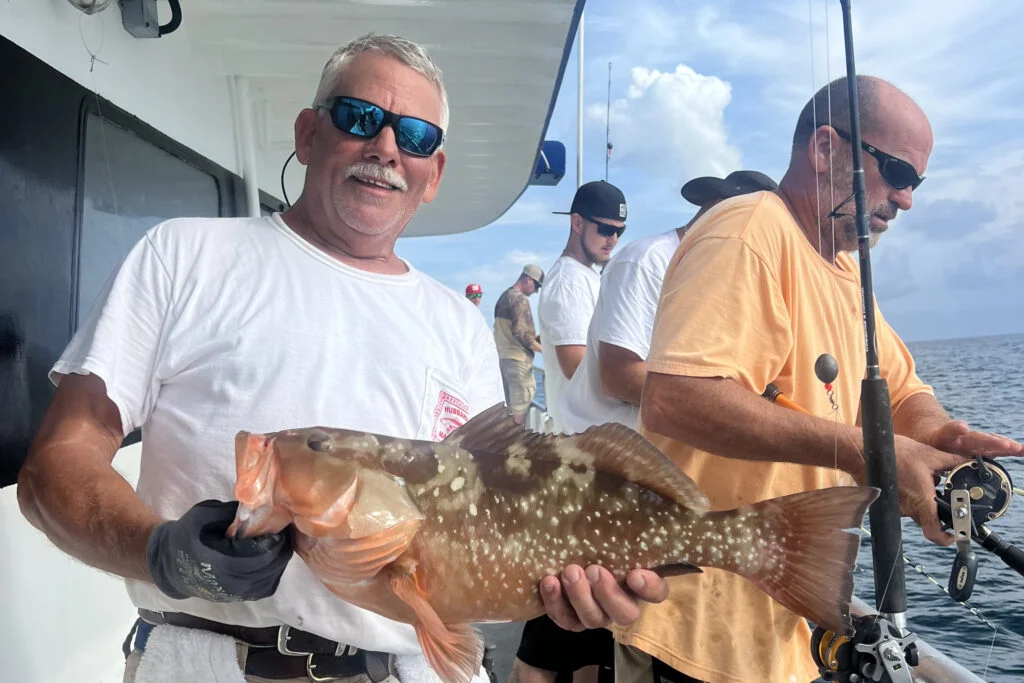
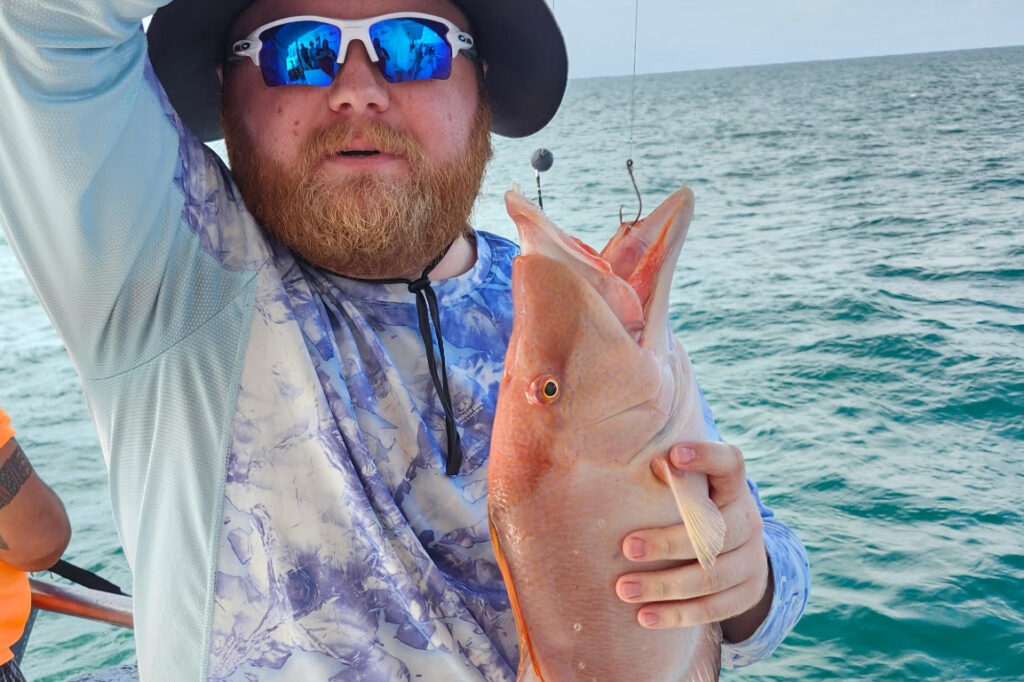
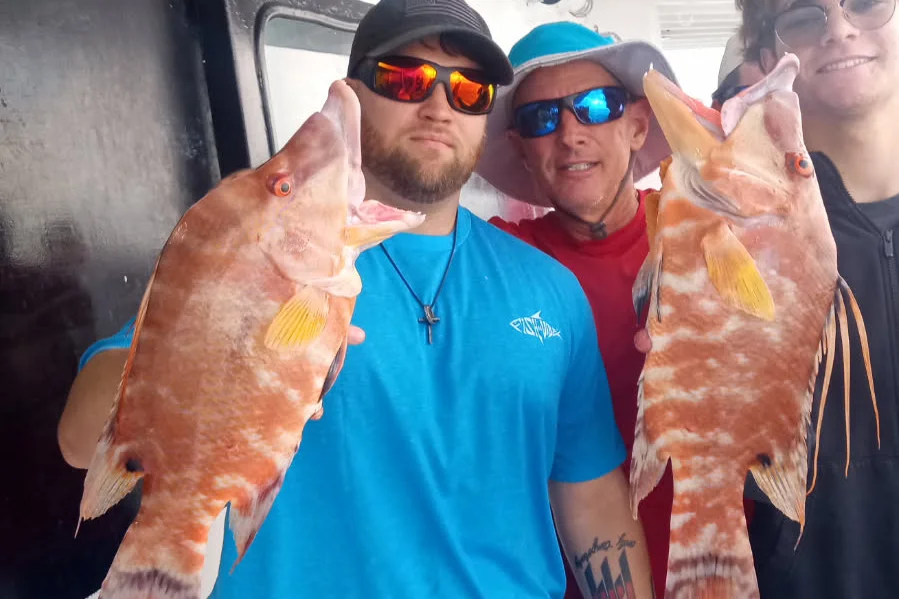
Lane snapper are hot near shore in the 60 to 100 foot range. These fish are aggressive and feeding on shrimp, squid, and threadfin chunks. Mangrove snapper continue to hold strong in the deeper stretches of nearshore water, especially on ledges and rocky bottom. Red grouper are still hit or miss in near shore waters, but we’re seeing a few quality fish come in off the 10-hour trips.
Fishing Tips
- Red Grouper: Target the deepest near shore waters with big dead baits or solid live baits. Use 60 lb test and 7/0 hooks for best results.
- Red Snapper: Use big dead baits like whole squid and bonita strips with heavy tackle to focus on larger fish. Prime trips include the 12-hour extreme, 39-hour, and 44-hour trips.
- Scamp Grouper: Use small to medium pinfish and cut threadfin, especially while targeting mangrove snapper.
- Mangrove Snapper: Near shore, use live shrimp and small chunks of threadfin on 30-40 lb test with 3-4/0 hooks. Offshore, use bigger chunks of cut threadfin or medium pinfish on 40-60 lb test with 5-7/0 hooks.
- Vermillion Snapper: Start around 100 feet of water using cut squid or threadfin. These fish are aggressive and not leader-shy.
- Yellowtail Snapper: Use shrimp, cut squid, and threadfin.
- Pelagic Species: Keep flat lines and pitch rods ready for sailfish, kingfish, wahoo, tuna, and mahi mahi.
Offshore Fishing Report
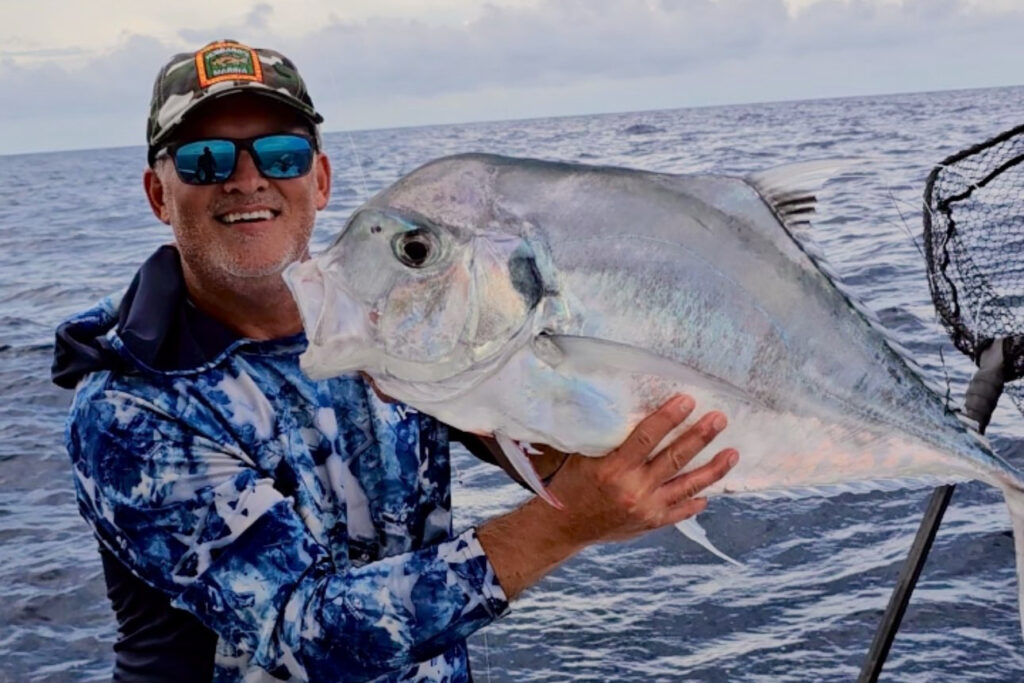
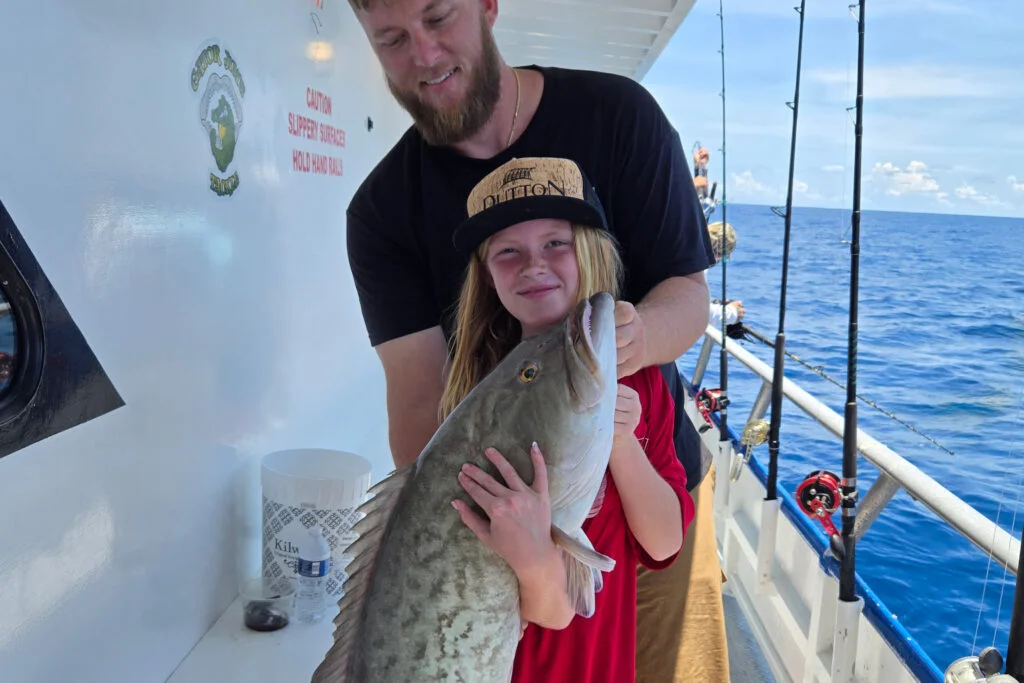
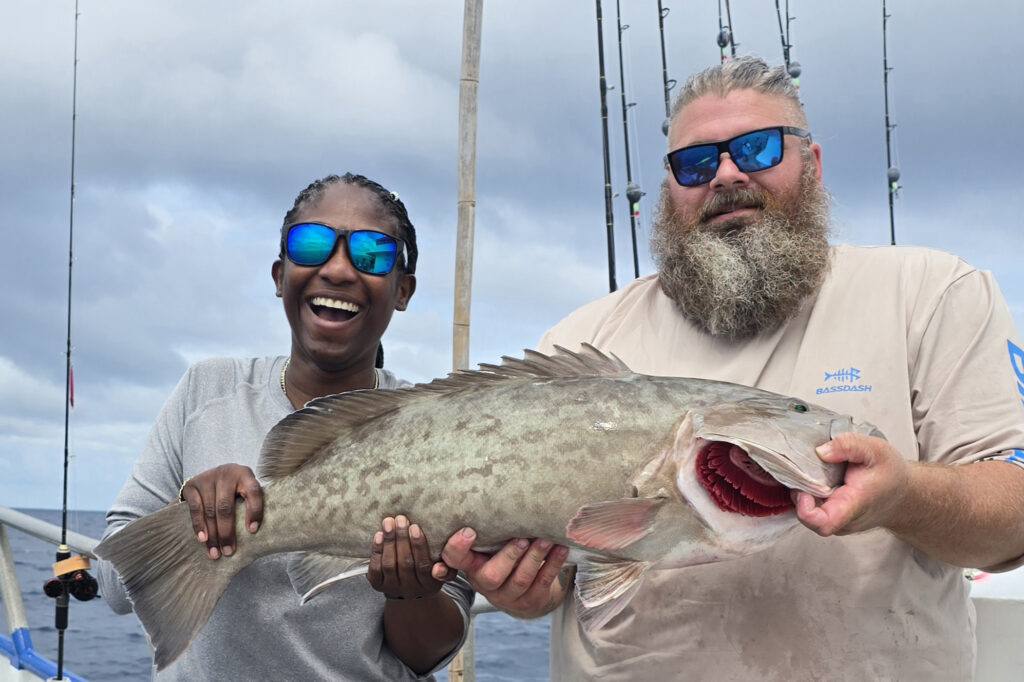
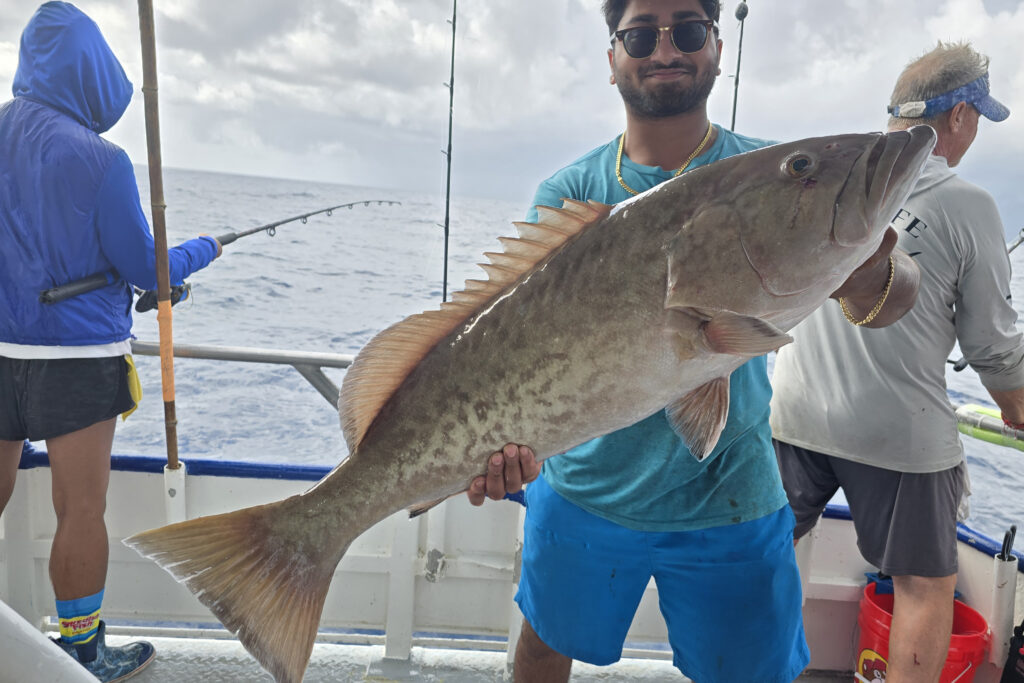
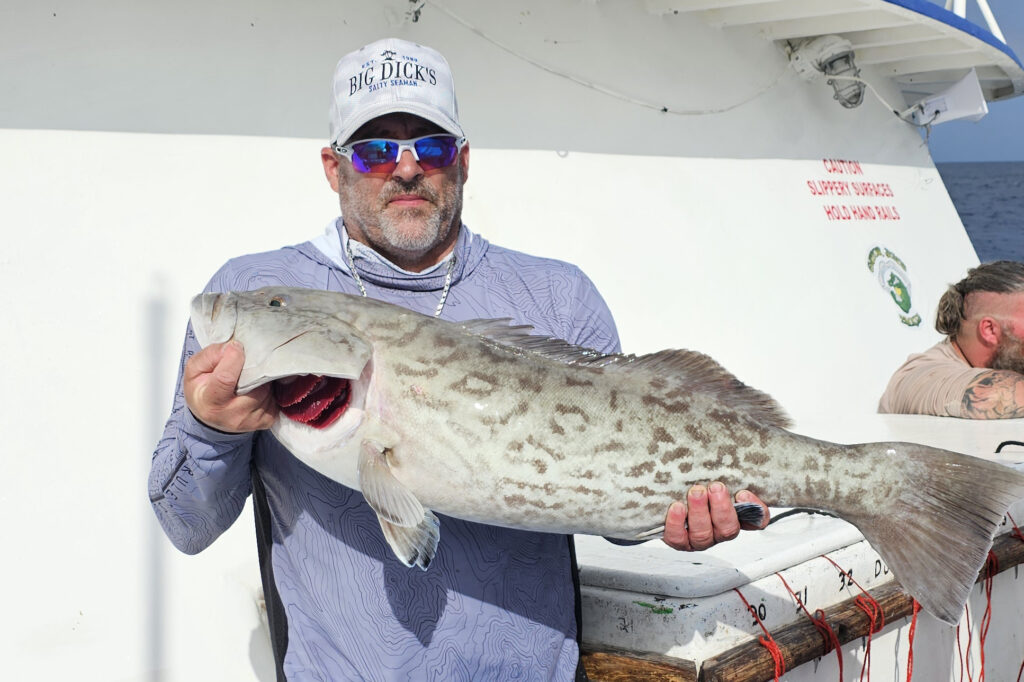
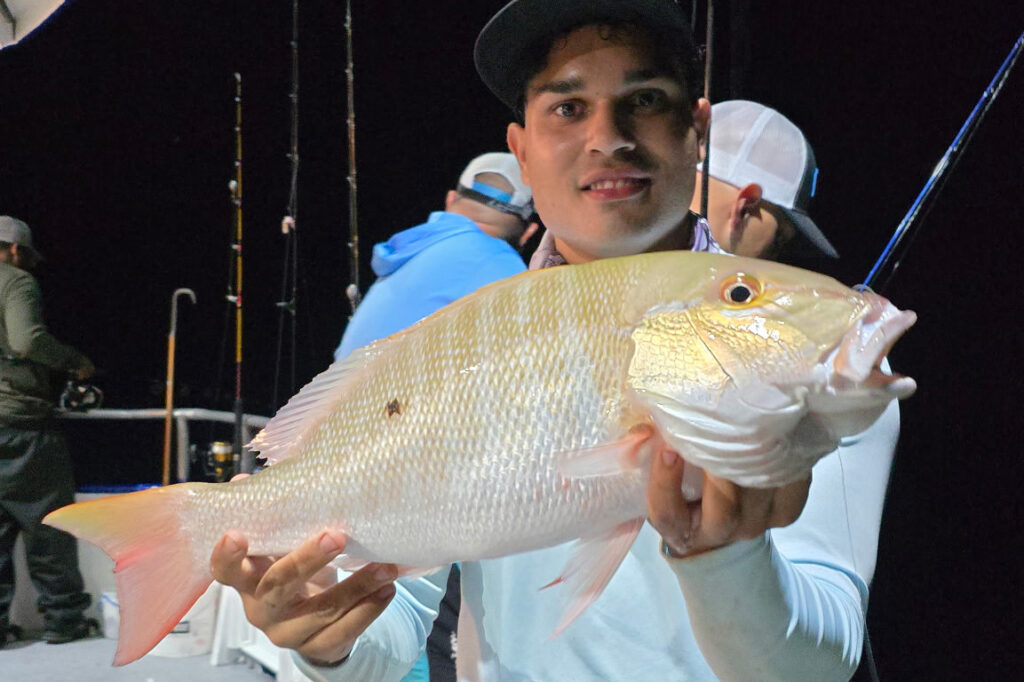
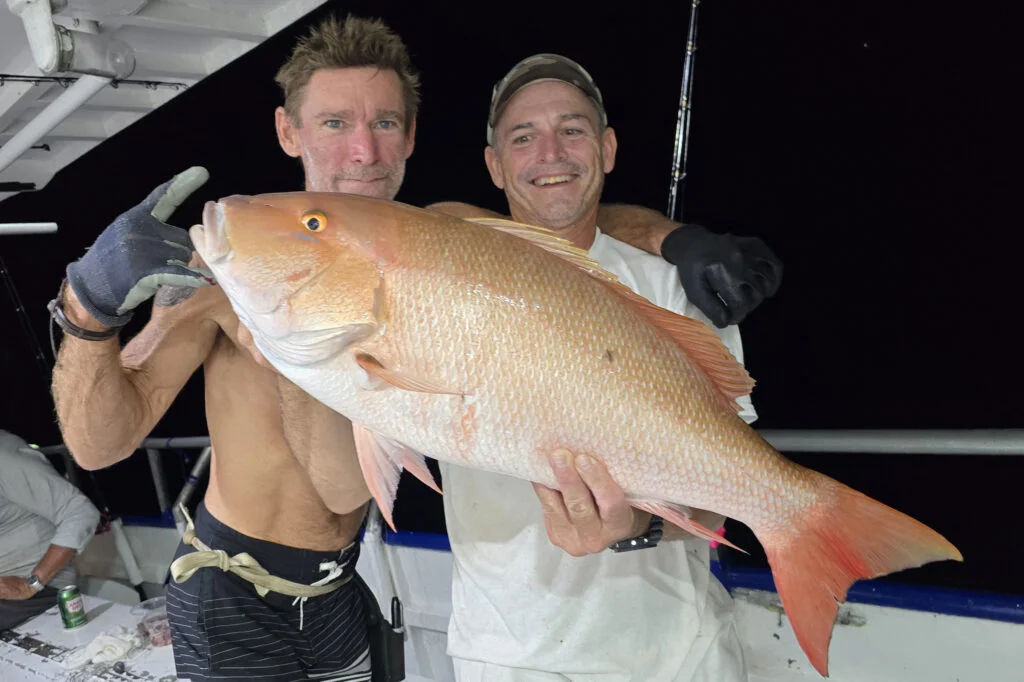
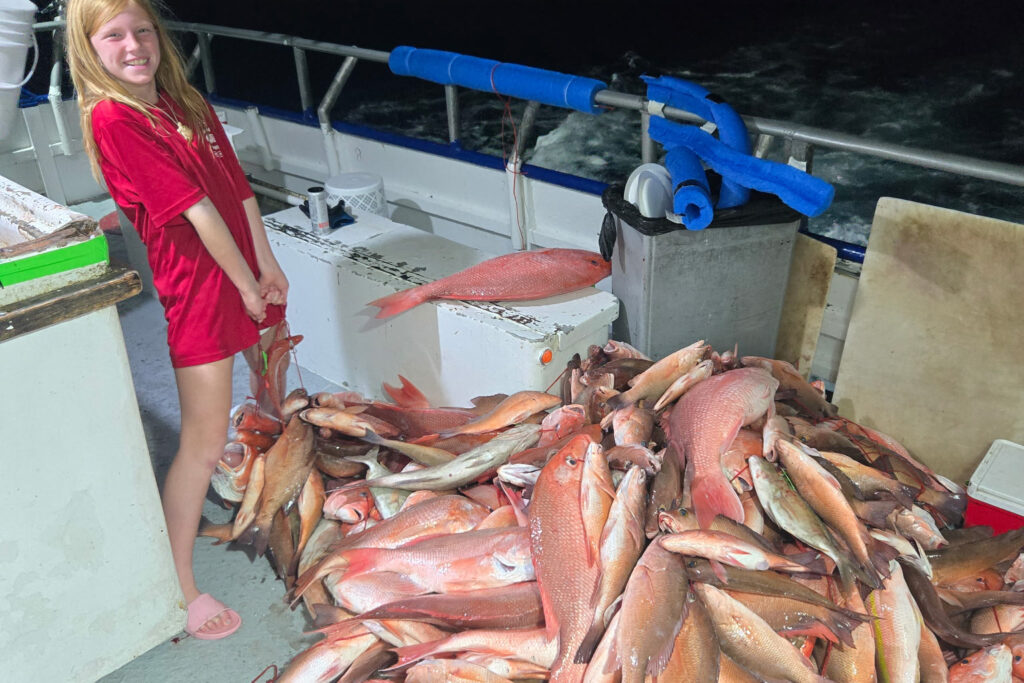
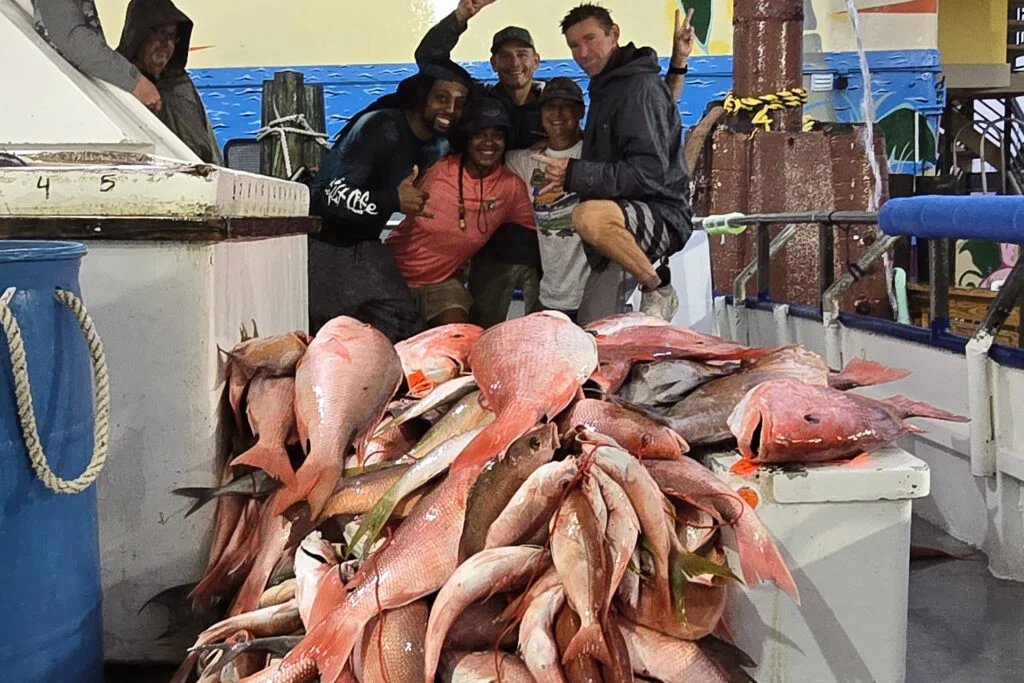
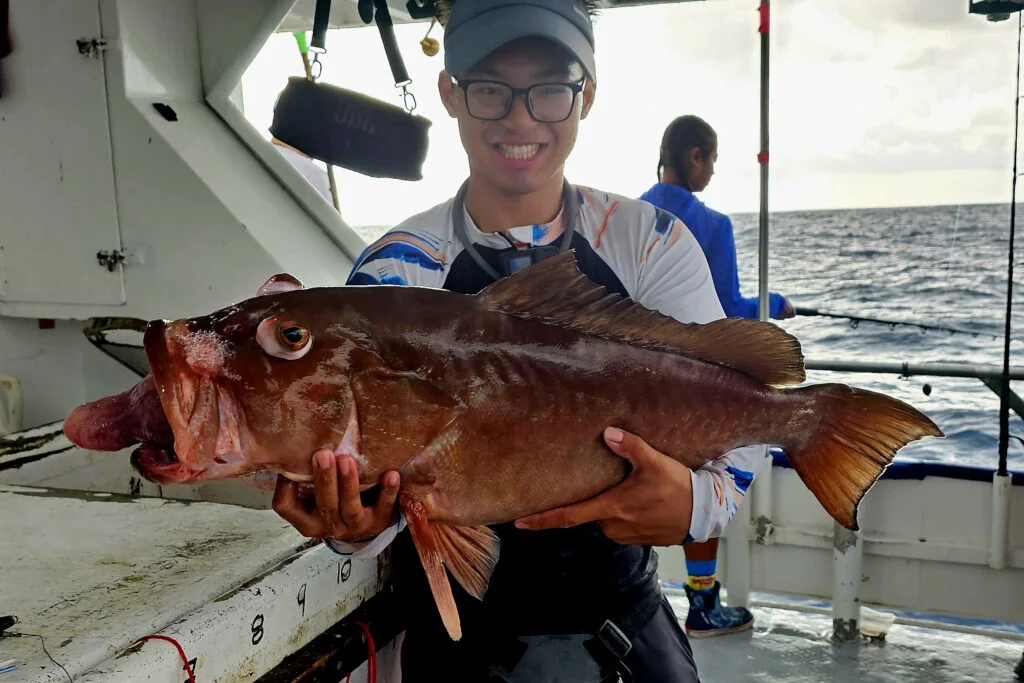
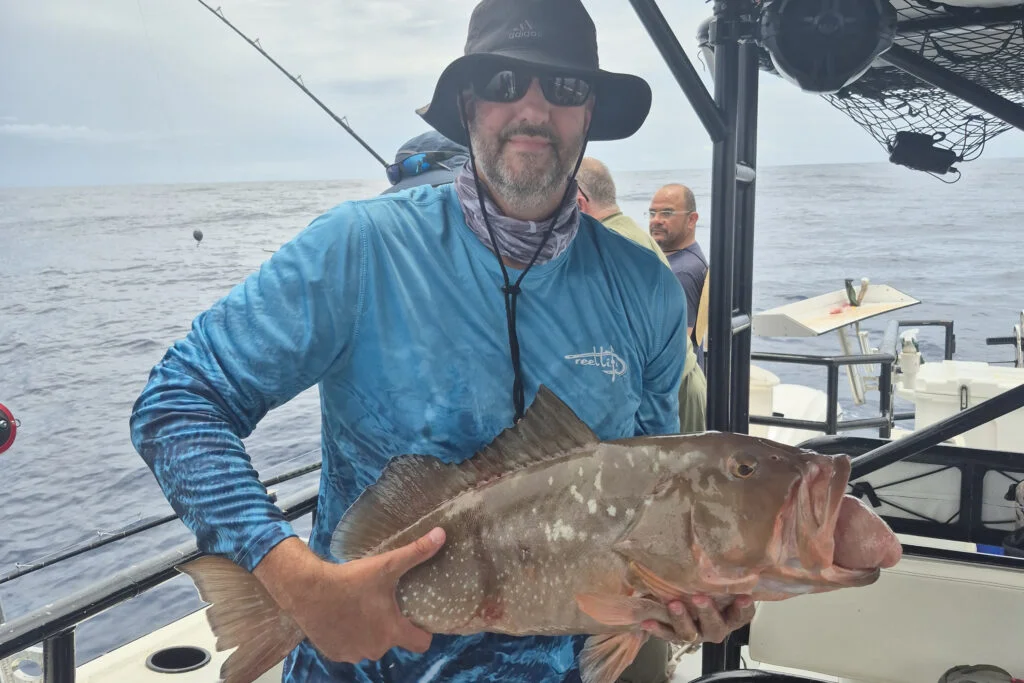
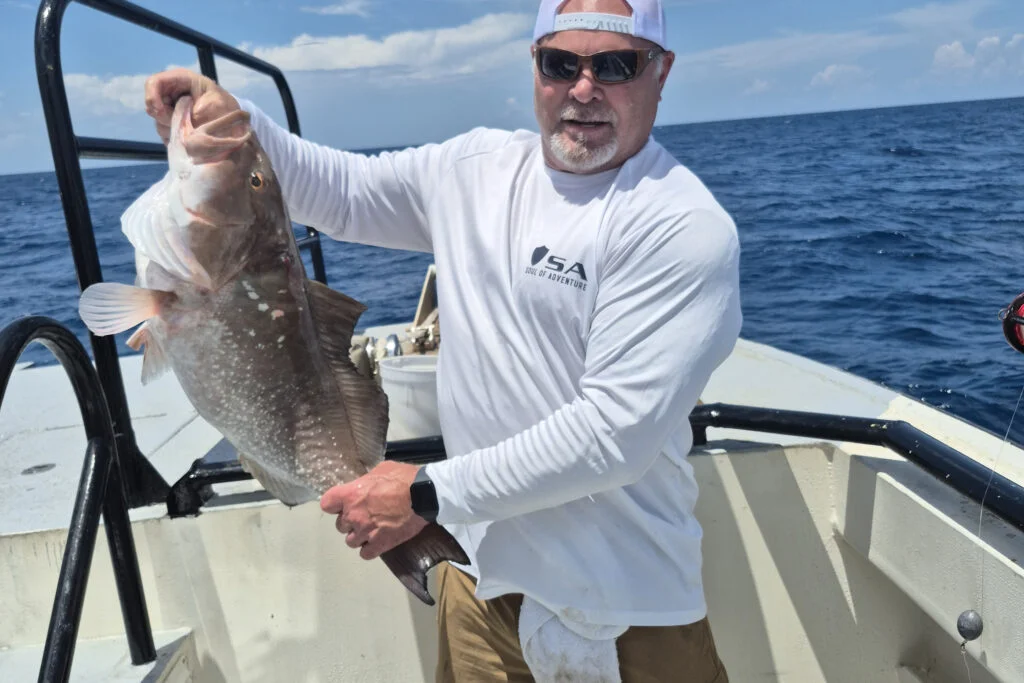
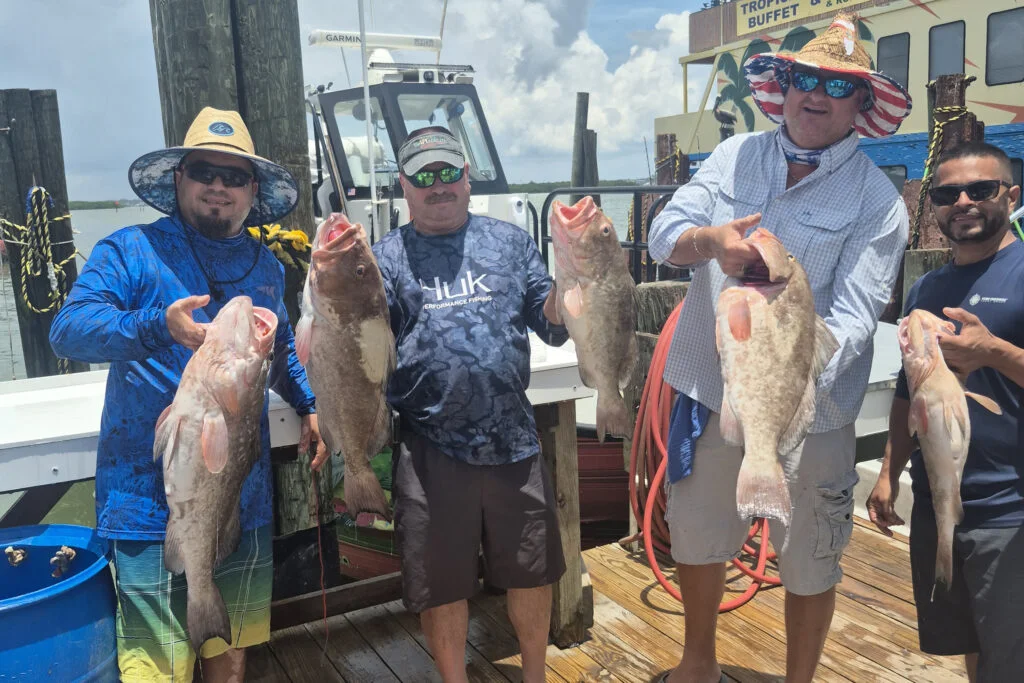
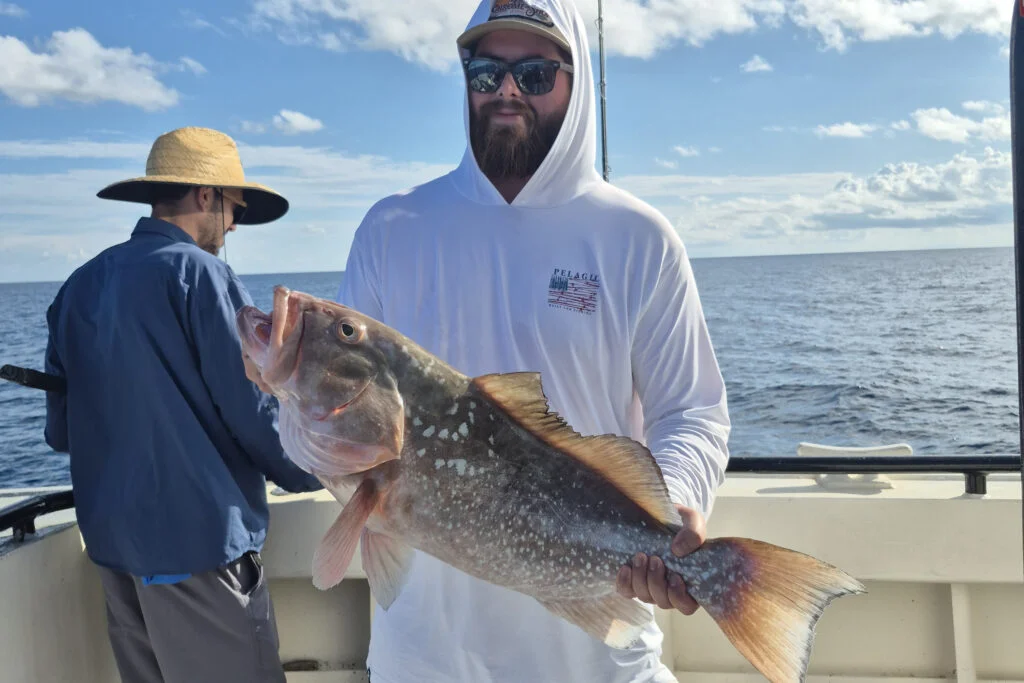
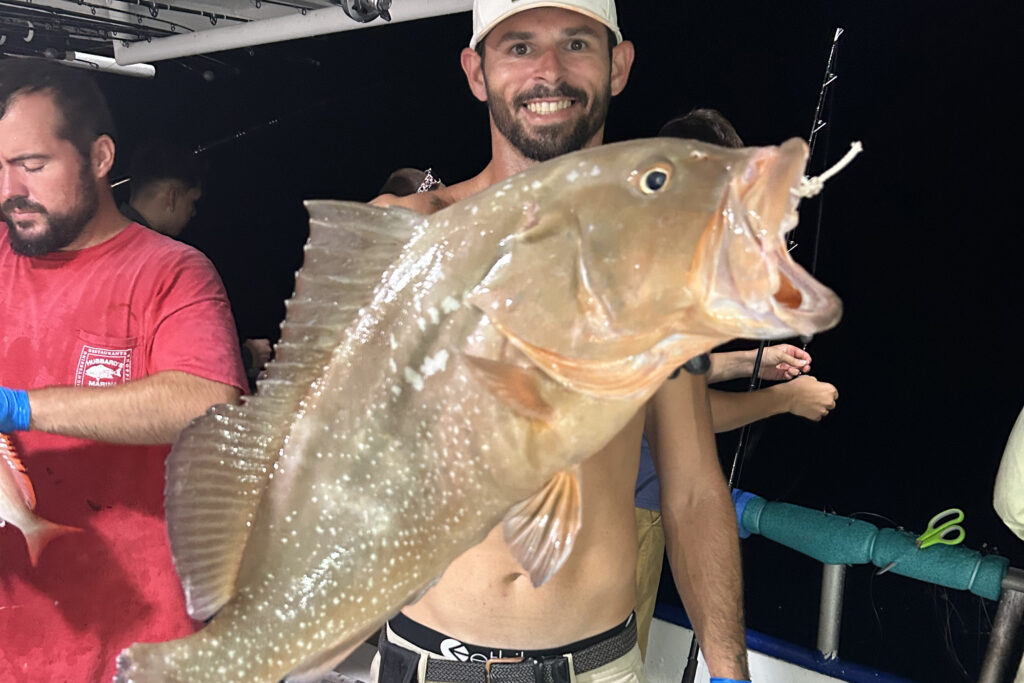
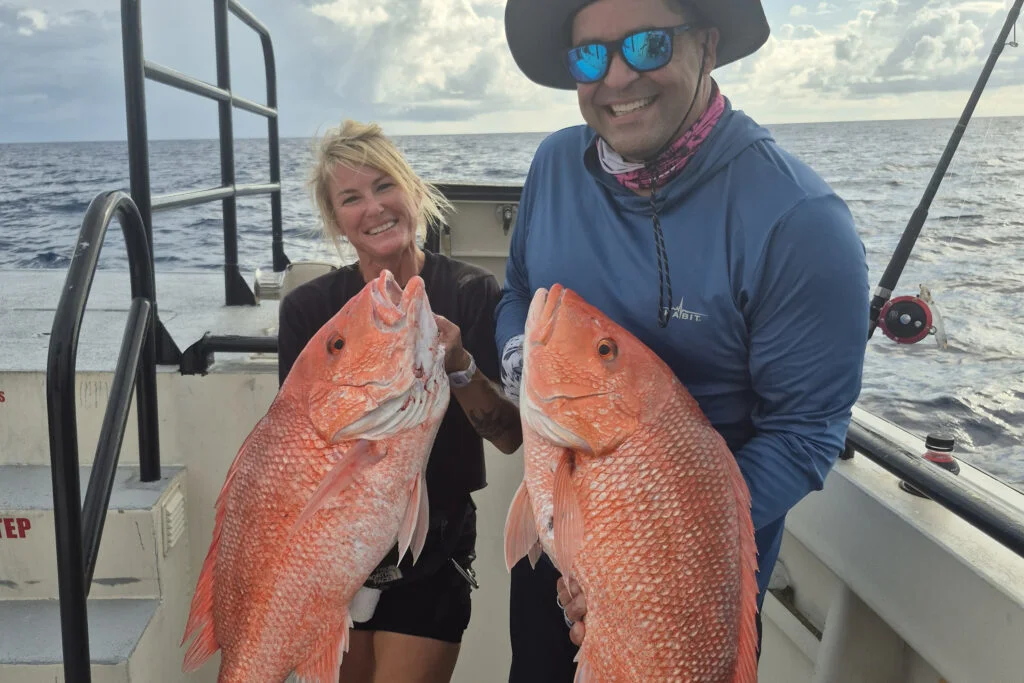
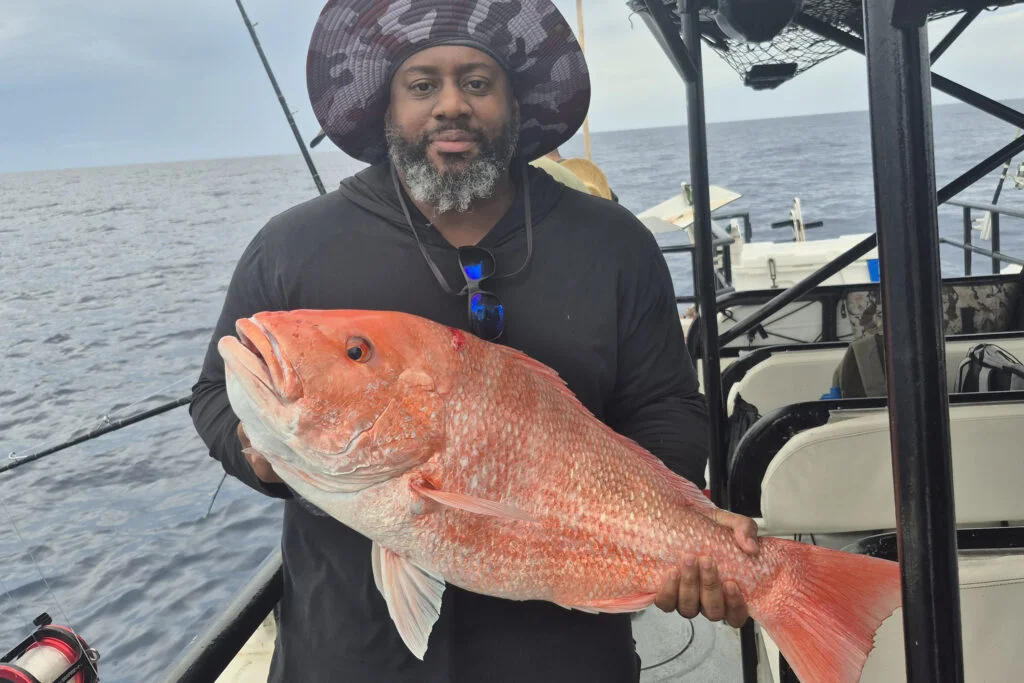
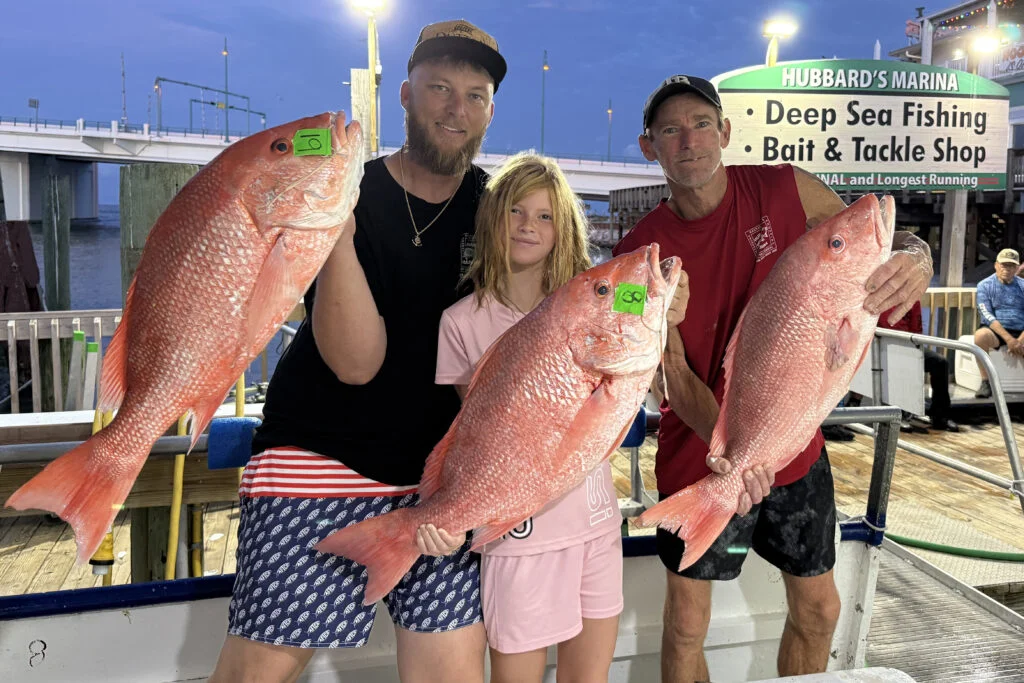
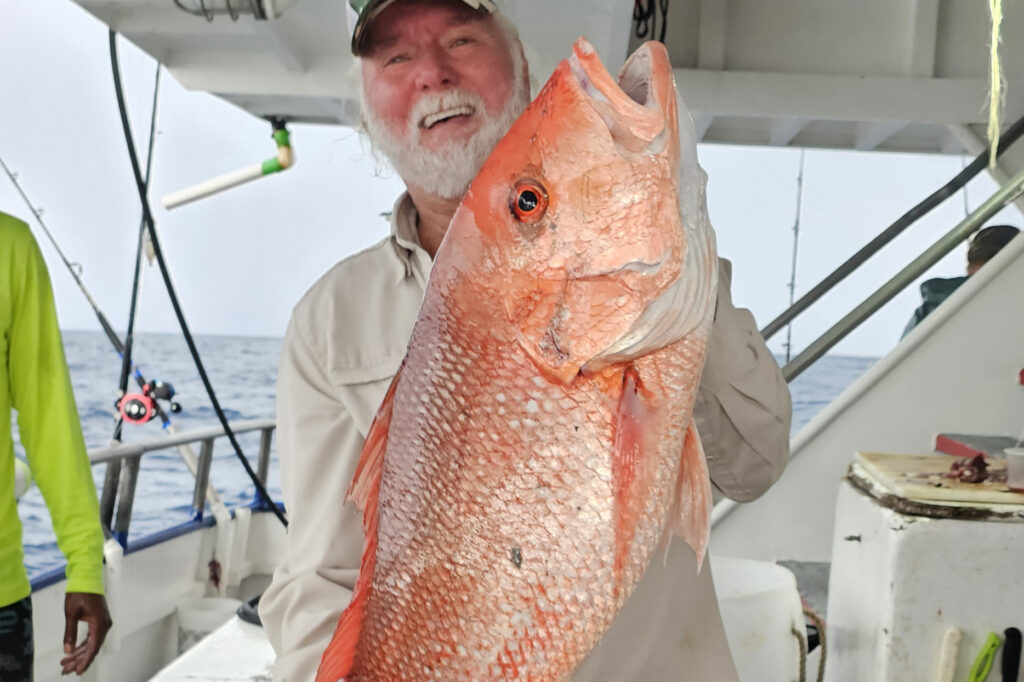
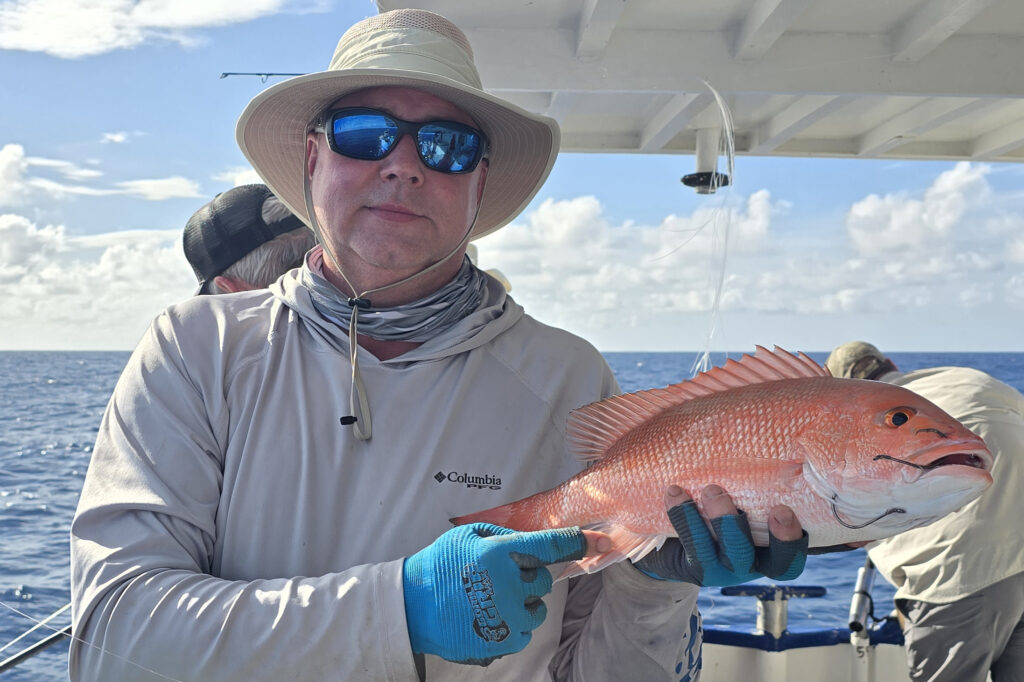
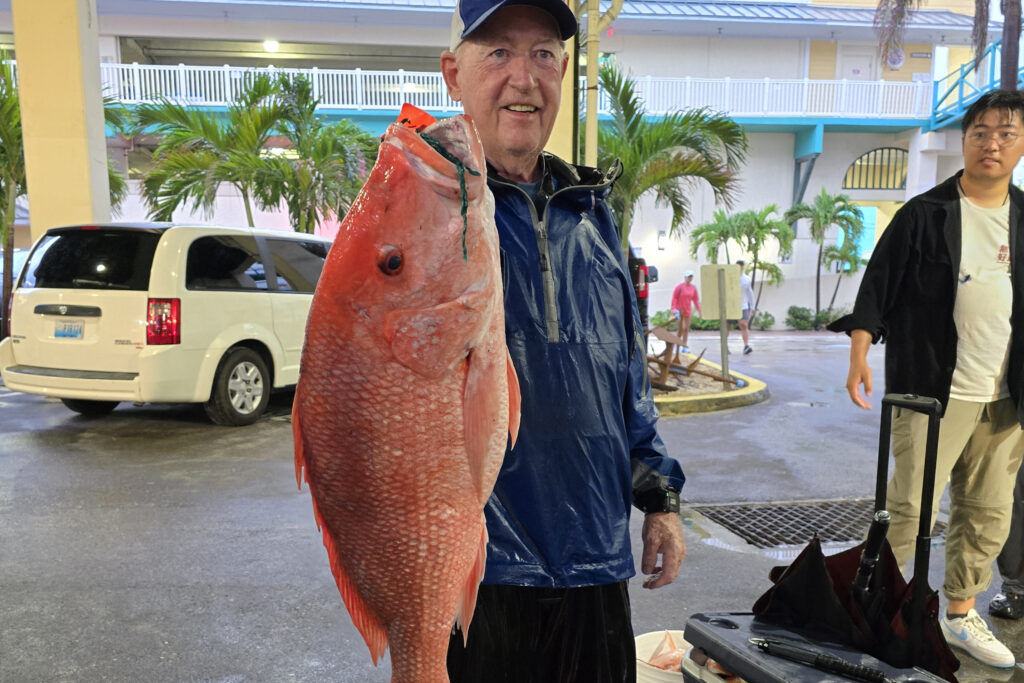
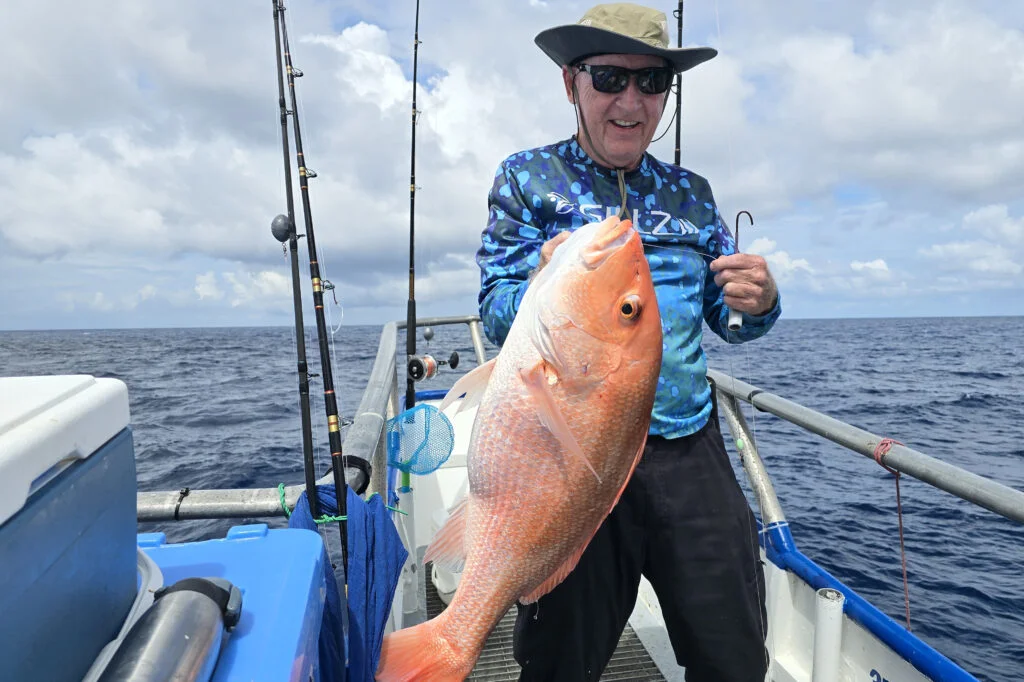
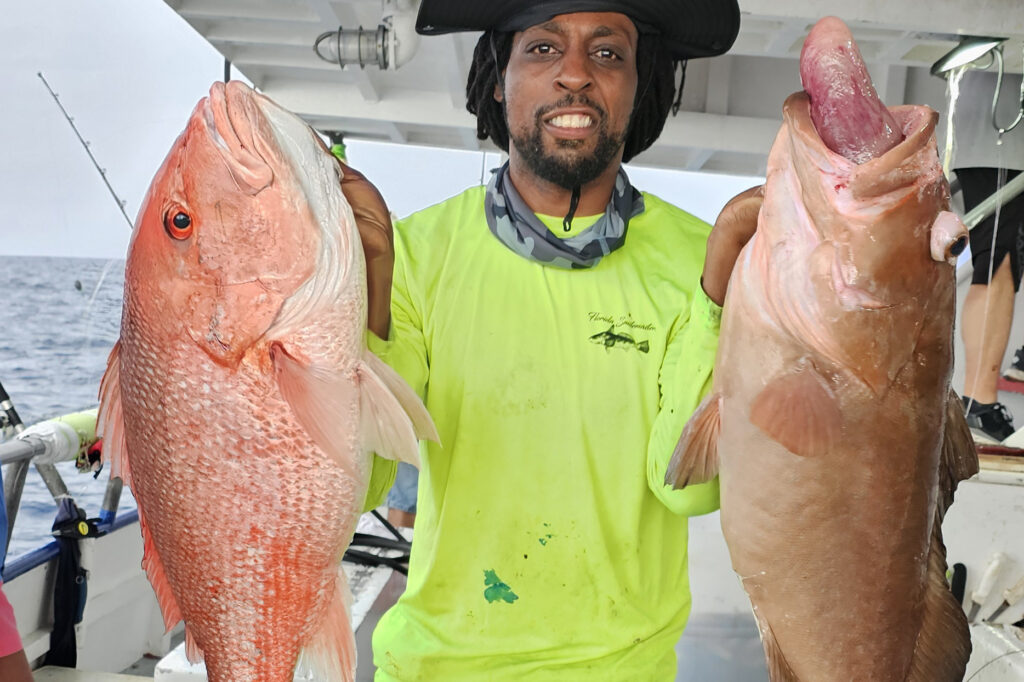
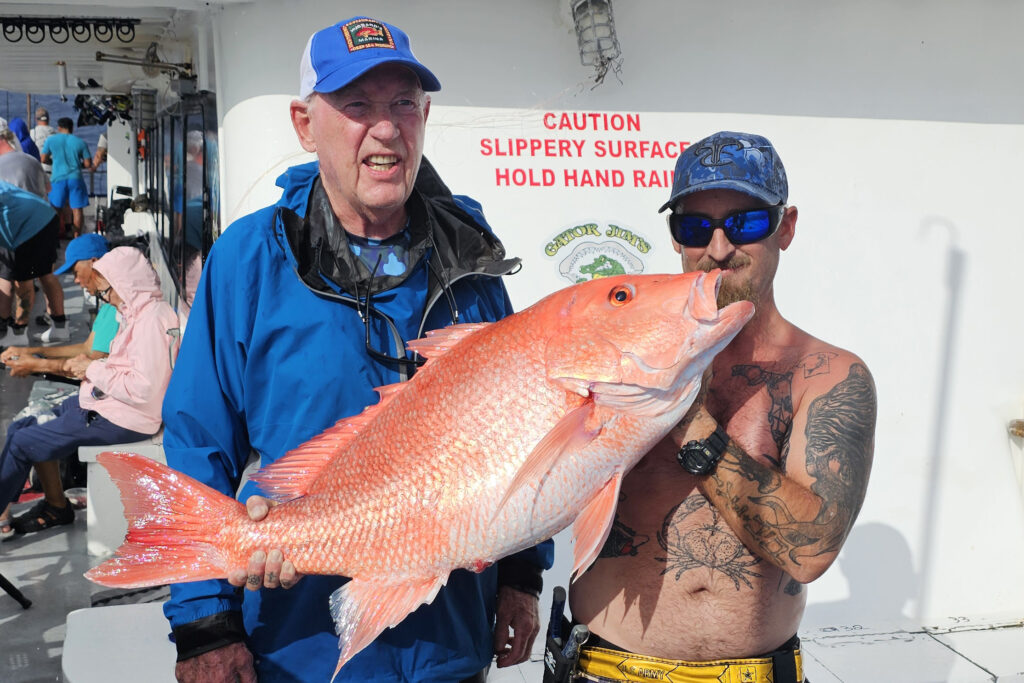
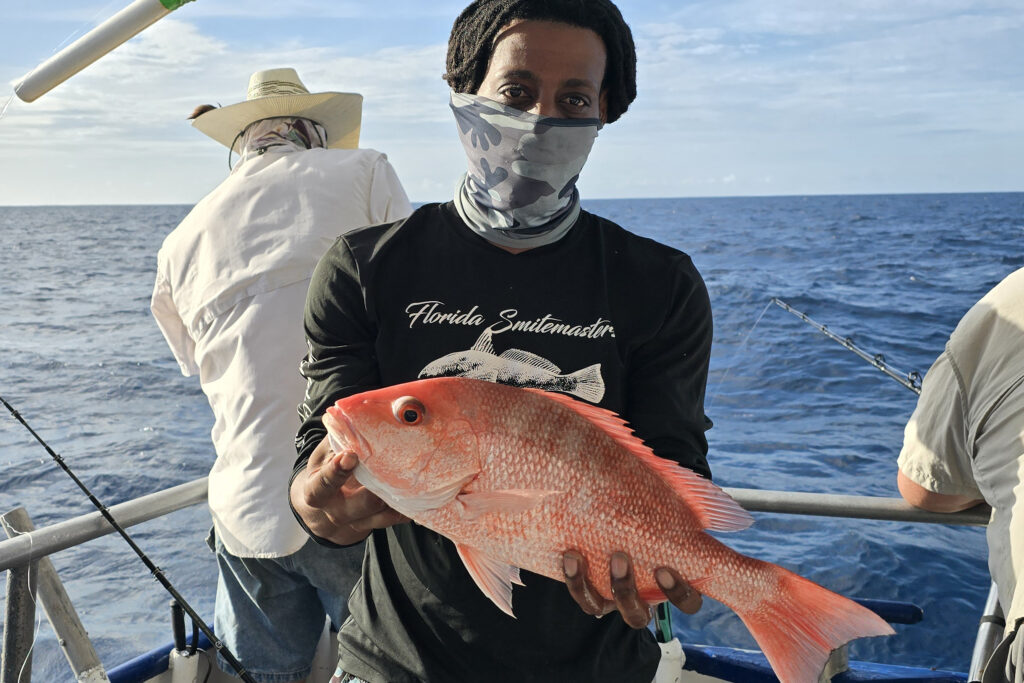
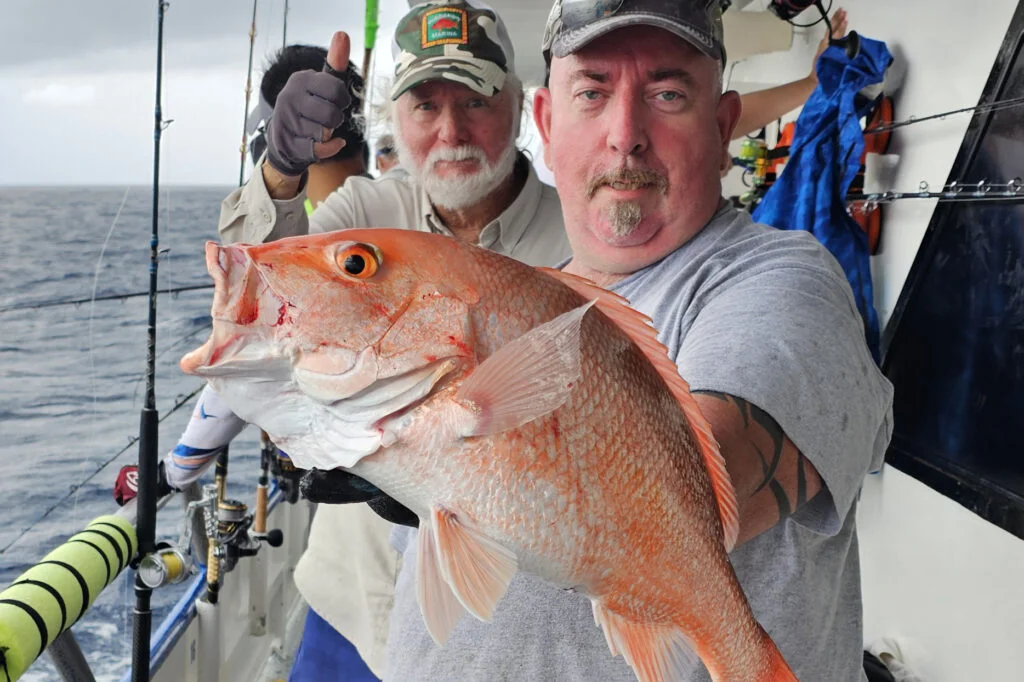
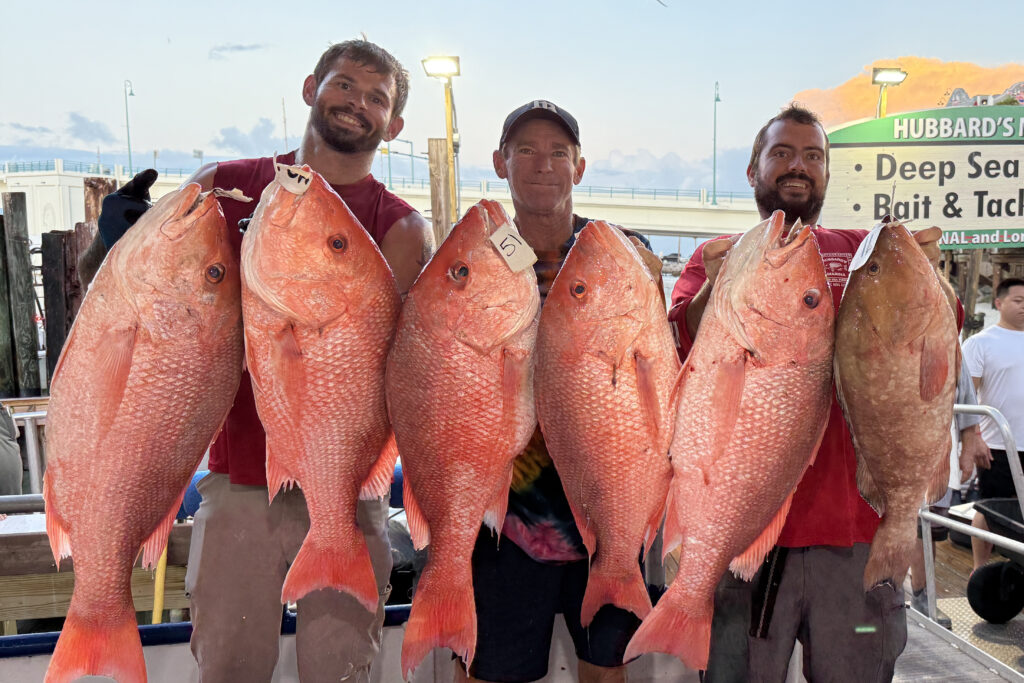
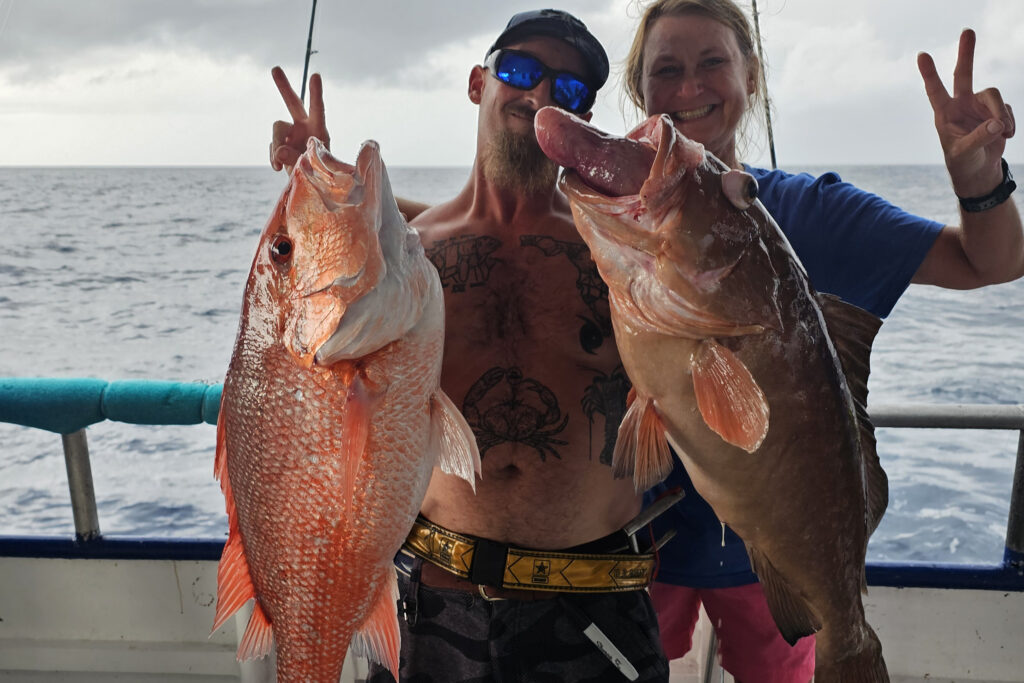
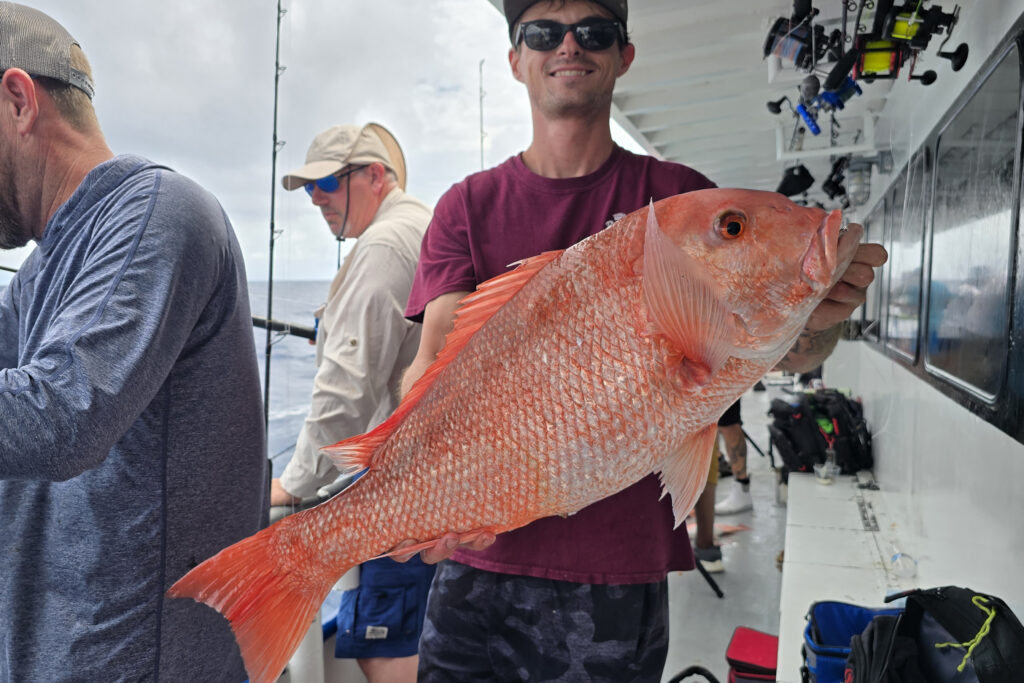
Red snapper season is going strong through September 15th, and we’ve been landing some huge fish on big dead baits like mackerel, bonito, and squid. Red grouper are active offshore, especially in deeper zones and on the big dead baits. We’re seeing 10 to 30 keepers per trip on our 39-hour runs. Scamp grouper are showing up too, particularly in 160+ feet of water. Mangrove snapper are still chewing great offshore, especially on double snell rigs with cut threadfin. Yellowtail are consistent during sundown and night bites, particularly on our 39-hour trips. Pelagic action is staying strong with some blackfin tuna and wahoo still around. And in big news—gag grouper season has been finalized for September 1st through the 14th. Check out our YouTube channel for the upcoming video breaking down everything you need to know, and don’t forget to SUBSCRIBE to Hubbard’s Marina on youtube!
Don’t forget, that we have some great videos on our fishing tips and tricks page here to show you how to target and rig for almost any species-> https://www.hubbardsmarina.com/fishing-tips/
Remember that when fishing in deeper nearshore and offshore federal waters, the Descend Act requires you to have a descending device or venting tool “rigged and ready.” If you know how to use a venting tool, keep it prepared. If not, here’s some helpful advice: https://bit.ly/3L5HTnv. Using a descending device is straightforward and doesn’t require as much precision or practice as venting. Return em’ Right has a training course only takes about 10-15 minutes, and you can learn valuable techniques to protect our offshore fishery. Spread the word by visiting: https://returnemright.org/.
TERMS OF REFERENCE-
Inshore: This covers the areas from the inner bays, through the bridges, and right up to the beaches.
Near Shore: This includes the coastal waters from the beaches up to twenty miles offshore, or up to a depth of 100 feet.
Offshore: This extends from twenty miles offshore or from a depth of 100 feet and beyond.
For more fishing reports, photos, videos, and other content, check out Hubbard’s Marina on Facebook, Instagram, YouTube, TikTok, Twitter, Pinterest, or Snapchat by searching for @HubbardsMarina. Remember our family motto: “If you’re too busy to go fishing, you’re just too busy!” Thank you for reading our report.
Capt. Dylan Hubbard, Hubbard’s Marina
Phone or text: (727) 393-1947
Website: Hubbard’s Marina
If you’re not seeing the latest article, try clearing your browser cache.
You can search “how to clear browser cache” on Google for quick steps.

